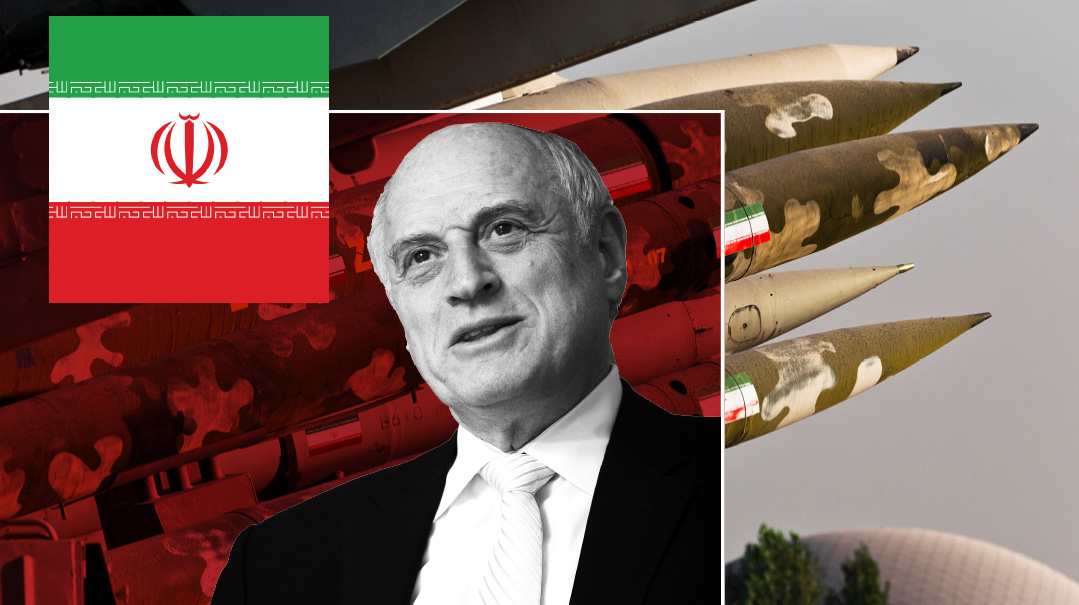The Battle for Jerusalem

Any threat to the unity of Jerusalem under Jewish control is not something that Israel or world Jewry can yield to
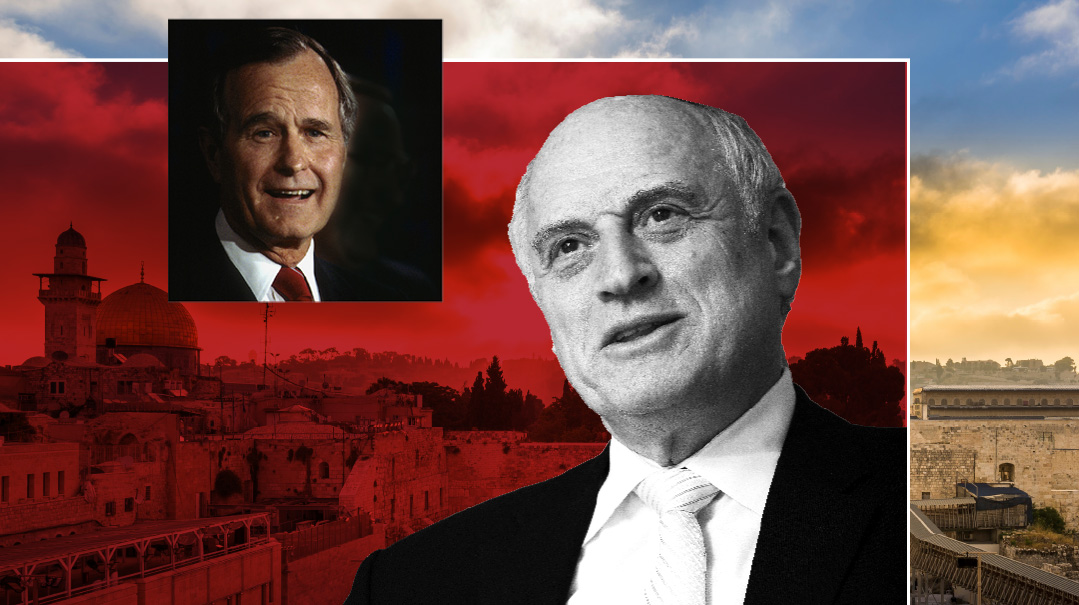
As terror groups rain fire on Israel, their focus remains on contesting the Jewish right to Jerusalem. In a context in which even Israel’s allies dispute the country’s right to the Holy City, Jerusalem needs to be sustained at the forefront of our political effort
Leader: President George H. W. Bush
Status: Rebuffed early overtures to move America’s embassy
Lesson: Politicians rank issues based on how frequently they’re raised
The fighting between Israel and the Islamic Jihad terror group last week was the most recent example of the summer flare-ups that have taken place in recent years. The rounds of tension often coincide with the anniversary of the liberation of Jerusalem, with the Gaza-based terror groups attempting to cow Israel into canceling the annual Flag March through the Old City.
Until 1995, even the US didn’t recognize the city as Israel’s capital. But the move that year by Congress — with President Clinton’s assent — to recognize Israeli sovereignty over Jerusalem wasn’t followed by most of the international community.
Even the Trump administration’s implementation of the embassy move in 2018 — which failed to trigger the mass unrest across the Arab world that had been feared — hasn’t significantly broken the opposition of the international community to Israeli control of the city.
Five years on from the embassy move, there’s no room for complacency: Jerusalem needs to be sustained at the forefront of our political effort today, because there are many people trying to undermine US recognition.
And while Israel is dependent on the support of outside parties, we can’t allow our national interests, identity, and history to be determined by outside forces — especially not by terrorist entities from Gaza to Lebanon.
Throughout history, our enemies have tried to deny us the symbol of our identity, but any threat to the unity of Jerusalem under Jewish control is not something that Israel or world Jewry can yield to.

Jerusalem native Prime Minister Yitzchak Rabin spoke emotionally about the city of his birth at the signing ceremony under the Capitol rotunda
Long March
Although Trump’s embassy move looms very large in the popular imagination, the roots of that breakthrough date back to the mid-’90s. I was personally very devoted to raising the issue of US recognition of Jerusalem long before it was a seen as a communal priority.
What I saw back then has lessons for the struggle for the city’s future today: elected officials will only take an issue seriously if we constantly raise it with them.
In one meeting with President Bush the elder, attended by a number of key Jewish community leaders, I raised the issue of recognition of Jerusalem. On the way out, President Bush kept me back and said, “You know this issue you raised — this isn’t an issue in the Jewish community. It’s your issue, not theirs.”
I replied, “How can you say that? It’s probably the one issue that unites the whole community!”
He said, “I don’t hear from them about it, and therefore it’s not their issue.”
I thought to myself afterwards that if the president of the United States doesn’t know how we feel about it, then it’s not his fault; it’s ours.
I determined then that we would mount a sustained effort to bring about US recognition of Jerusalem as Israel’s capital.
New York’s Senator Daniel P. Moynihan played a leading role in the effort that led to the passage of legislation in 1995. I went to see Prime Minister Yitzchak Rabin first, and said that we had across the board support from Democrats and Republicans.
He said, “If you get this bill passed, I will come for the signing.”
As a final stage, we went to see President Clinton, who agreed not to veto it, as long as it contained a possibility for the president to issue a waiver on implementation every six months.
With bipartisan support secured, we asked permission to use the rotunda of the Capitol for the signing ceremony — a very rare event for an outside group.
I called Rabin and said, “Do you remember the promise that you gave to me? Tomorrow the bill will pass and next week will be the ceremony.”
“I’ll honor my commitment,” was his reply.
Rabin indeed came and spoke very movingly. He wasn’t an emotional man, but his words were poetic as he spoke about “my Jerusalem,” the city he’d been born in.
“Jerusalem is the heart of the Jewish People and a deep source of our pride,” he said. “My Jerusalem is Dr. Moshe Wallach, the doctor of the sick of Israel and Jerusalem, who built Shaare Zedek hospital. I was born in his hospital. I am a Jerusalemite.
“My Jerusalem is the changing color of its walls… the city where holiness envelops every stone, every word, every glance.”
Rabin wasn’t known for being emotional, but after the ceremony, he hugged me and said, “This was one of the greatest days of my life.”
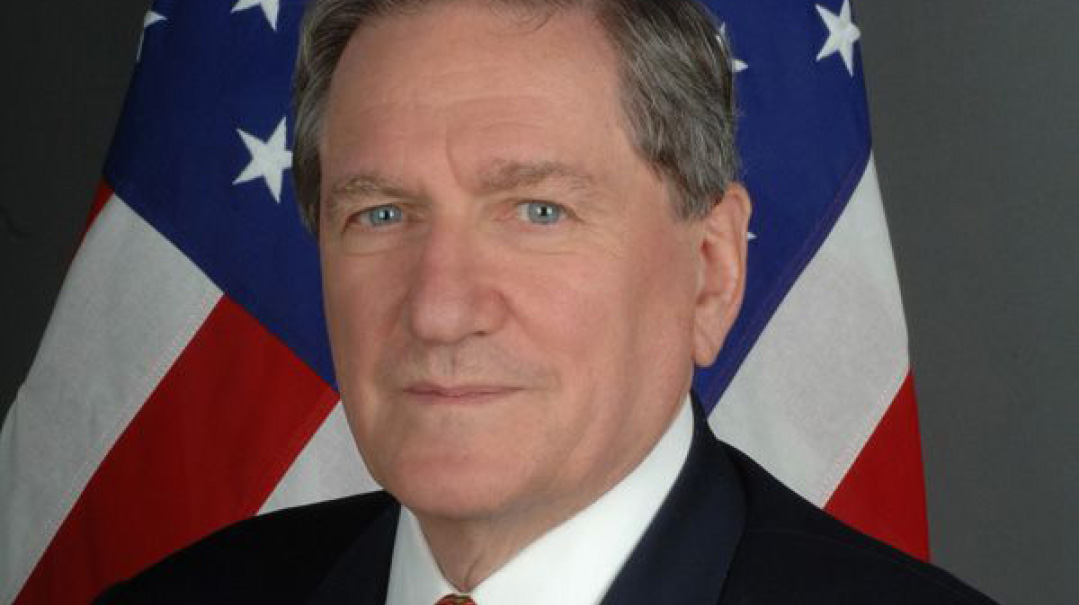
American ambassador to the United Nations Richard Holbrooke
Guardian of the City
But in a sign of how little we can take for granted when it comes to Jerusalem, the US law change was followed by a major push to internationalize the Old City, which we were able to foil only through a display of Yad Hashem.
The unlikely hero of Jerusalem was the American ambassador to the UN, Richard Holbrooke.
It began when Ronald Lauder and I had a meeting with a prominent European diplomat, at the end of which he mentioned offhand that on Friday there was going to be a move to internationalize control of Jerusalem.
Lauder had stepped out, and I was shocked to hear that something like that was planned. But I indicated that I knew about it, so that he would share some details. The diplomat added that there would be a UN Security Council meeting to create a “Holy Basin” of the Old City and sacred sites under Security Council control. He added that the Israelis had agreed to it.
My head was spinning, I couldn’t believe that a plan so threatening to Israel’s security had advanced to such a point.
I updated Lauder about it, and ran to the UN to speak to Holbrooke, who turned out to be unaware of what was happening under his own nose.
He picked up the phone to the State Department, and when they hemmed and hawed, hedging about whether they’d been involved in the move, I said, “Let’s call the president.”
It turned out that President Clinton was also unaware of the step, and a further call to the office of Israeli prime minister Ehud Barak brought a denial from his end. (Barak’s subsequent willingness to countenance the very same moves casts this denial into doubt, however.)
The trail led to Foreign Minister Shlomo Ben-Ami, who it turned out, had been negotiating away the future of Jerusalem.
Speaking to Ben-Ami, Holbrooke exploded. “Do you know what jeopardy it will put Israel in to be in violation of a Security Council resolution every day?” he thundered.
As a result of the call, Ben-Ami backed off, and 15 minutes before the motion was due to be introduced that Friday morning, it was withdrawn.
Richard Holbrooke didn’t get the credit due at the time because we were unable to go public with it. He was a liberal Jew, and that day, I saw a true Jewish reaction from him as he came to Jerusalem’s defense.
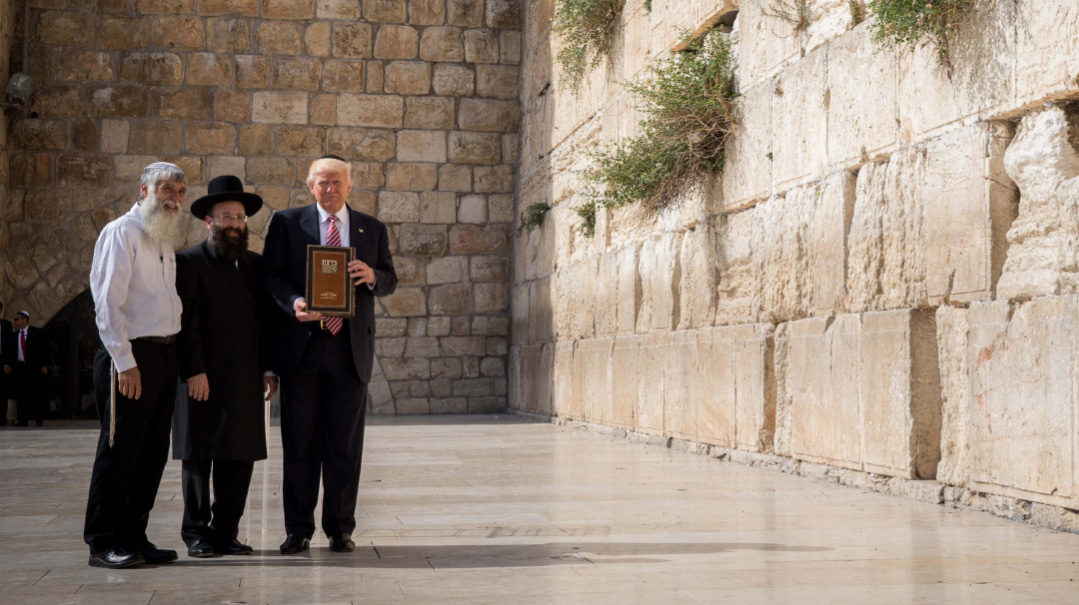
“The first time I’d ever seen the Kosel so empty” Malcolm Hoenlein joined Trump on his historic 2017 visit
Making the Move
Over the more than two decades that the Jerusalem Embassy Act was American law, more than one president seriously considered implementing the move, but last-minute pressure from advisors and US allies led to them signing waivers and putting off a decision.
But in 2017, I was one of the few people who accompanied President Trump and the first lady to the Kosel. It was the first time that I’d ever seen it totally emptied of people.
After they’d prayed there, the first lady posted a picture of the Western Wall, and within minutes there were tens of thousands of likes. It was a huge reaction. Similarly, across the Arab world, opposition was very minimal, with some leaders paying only lip service to muted protest. There was certainly none of the conflagration that had been predicted.
I told the president’s people: “That’s the message — if you’re going to do something, just do it. Don’t seek permission, because you’ll only invite negative reaction.”
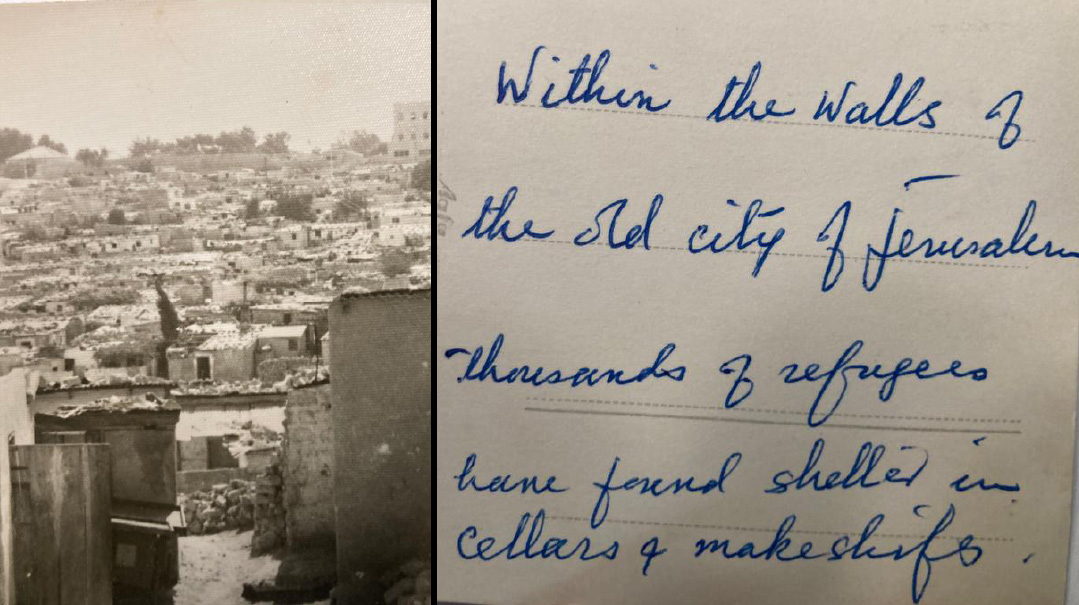
NARRATIVE WARS After being detained by the Jordanians on a 1966 visit to the Old City, Malcolm Hoenlein was given this view of the Old City together with a postcard bearing a propaganda point about Arab refugees
Eternal Right
That approach — asserting the Jewish claim to the city, along with guarantees of freedom of access to all — is one that we have to state clearly when talking about Jerusalem’s status.
Many Arab countries feel a connection to Jerusalem. As a descendant of Muhammad, Morocco’s King Mohammed VI feels that he has a special status and was responsible for the Jerusalem issue under the Arab League.
The Saudi government also has a special status on the issue, as do, above all, the Jordanians, whose role was enshrined by the appointment of the Waqf after the 1967 war by Moshe Dayan, who gave over the keys to the Waqf, something that has raised many questions in the years that have followed.
The Waqf has been a hostile force and has attempted to destroy the top of the Har Habayis. Under Yassir Arafat, they destroyed the “Solomon’s Stables” section underneath the Har Habayis.
They excavated whole sections of the mountain, dumping the remains outside the Old City, which led to the decade-long Sifting Project, in which 200,000 volunteers have sifted through the earth and rubble and have found amazing things like a burned coin with the name Eliyahu from ancient times.
But if you listened to the media, you wouldn’t know that before 1967, the Muslim world never tried to make the city into the capital of an Arab state. No Arab leader ever visited the city during the 20 years of Jordanian occupation.
Their focus on Jerusalem was about denying it to the Jews. I was in Jerusalem in 1966, on both sides of the Israeli-Jordanian border, and saw how the Jordanians had done nothing to improve the city.
I’d actually been arrested by the Jordanians, and my camera was confiscated. After they released me, the Jordanians gave me a photo of the Old City, with a postcard making a propaganda point.
“Within the walls of the old city of Jerusalem,” it reads in flowing script, “thousands of refugees have found shelter in cellars” — with “refugees” meaning Arabs made homeless due to Israel’s actions (see pictures).
On that visit, I saw a city that was so decrepit that you couldn’t walk in the shuk; the meat hanging there was not recognizable due to a heavy coating of flies. There was no sanitation, and the area around the Kosel was a garbage dump.
I believe the neglect that the city suffered under Arab control — and the destruction of the Jewish Quarter — is testament to the way that they really view it.
This was the love that they had for it.
There are many today in the Muslim and Arab worlds who want to see Jerusalem open to all. They can’t speak publicly, because today it’s universally said that the city is their third holiest site.
The Trump peace plan, which proposed a Palestinian capital in Abu Dis, outside what’s acknowledged as the municipal boundaries of Jerusalem, was one of many attempts to find a workable balance of Palestinian aspirations and preservation of the city’s unity.
But the truth is that the Arabs don’t want to negotiate any reasonable solution, and they already have a capital in Ramallah.
Going back to Oslo, Rabin never intended to compromise on the capital. When the accords were announced, I was briefed on them even before the agreement’s architect, Foreign Minister Shimon Peres, had flown back from Norway.
I asked Rabin why Jericho was slated to be given back. He answered that the idea was that by offering it as a Palestinian capital, it would take pressure off Jerusalem.
That history is why, ultimately, we have to convey that these are not equal claims: Jews have only ever turned to Jerusalem, whereas Christians looked to Rome and Muslims to Mecca.
From ancient times, Christians taunted the Jews by crying “Hep! Hep!” an acronym for the Latin “Hierosolyma Est Perdita” — Jerusalem is lost, a mockery of the Jews’ homelessness. Every year we said L’shanah Haba’ah Birushalayim.
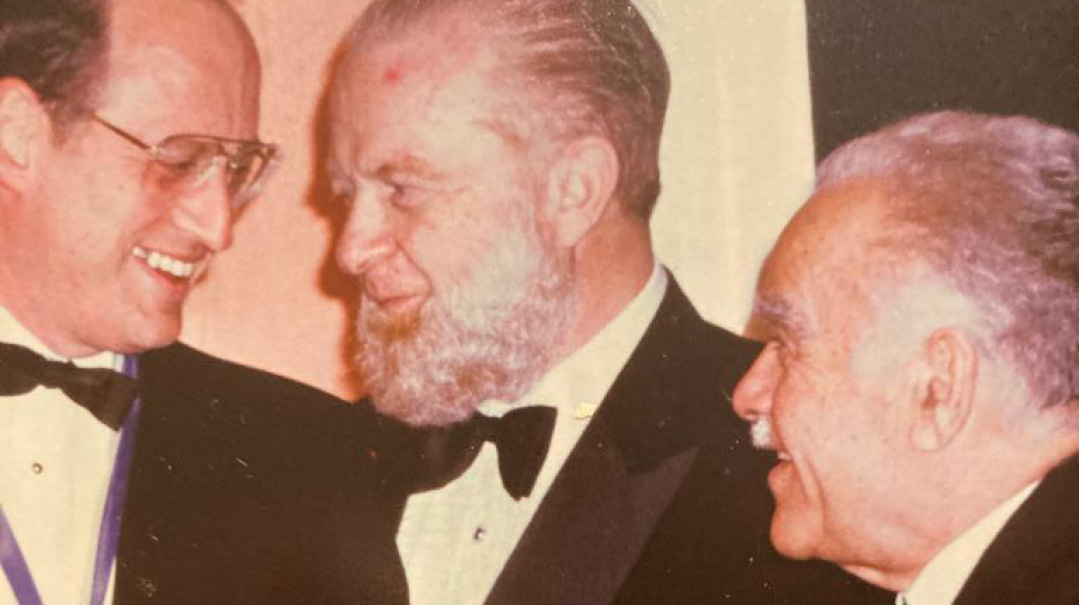
O, JERUSALEM Malcolm Hoenlein being awarded the Defender of Jerusalem Award by Prime Minister Yitzchak Shamir
Footsteps of History
Over years of bringing non-Jewish politicians and celebrities to Jerusalem to show them the Jewish sites, I’ve seen that they often come away starry-eyed and elevated by what they’ve seen.
But paradoxically, sometimes it’s members of our own community who are blasé, and unaffected by Jerusalem.
When we worry about the emunah of our kids, there is nothing more powerful than sharing with them discoveries about this city, every one of which is consistent with Tanach.
You can see the menorah carved in rock by a Jew coming off Har Habayis. The mikveh of the Kohein Gadol in the Old City. You go to Ir David and see the pit where Yirmiyahu was held captive. That’s what Yom Yerushalayim means to me.
We fail our kids by not exposing them to the reality of this city’s history.
We need a dual approach to Jerusalem. The political battle is what enables us to excavate in Jerusalem, and we need to continue that struggle, to entrench America’s continued support.
Despite overwhelming support for Israel in Congress, it’s doubtful whether the Embassy Act, which passed with total bipartisan support back in 1995, would command the same number of votes in today’s far more partisan climate.
That’s why the struggle must go on, even with the American embassy in Jerusalem, to keep the issue alive for US politicians and enable other countries to make the move.
We should be inspired by the recent visit of Reza Pahlavi, son of the late Shah of Iran, who visited the Kosel, and didn’t go to the Muslim holy places.
Similarly, recent congressional delegations led by Speaker Kevin McCarthy and Minority Leader Hakeem Jeffries, and the reverence and commitment that they expressed to Jerusalem.
And beyond the world of diplomacy, inside our own communities, we need to remember for ourselves what Jerusalem means, and what price our great-grandparents would have paid to be able to experience it.
(Originally featured in Mishpacha, Issue 961)
Oops! We could not locate your form.

